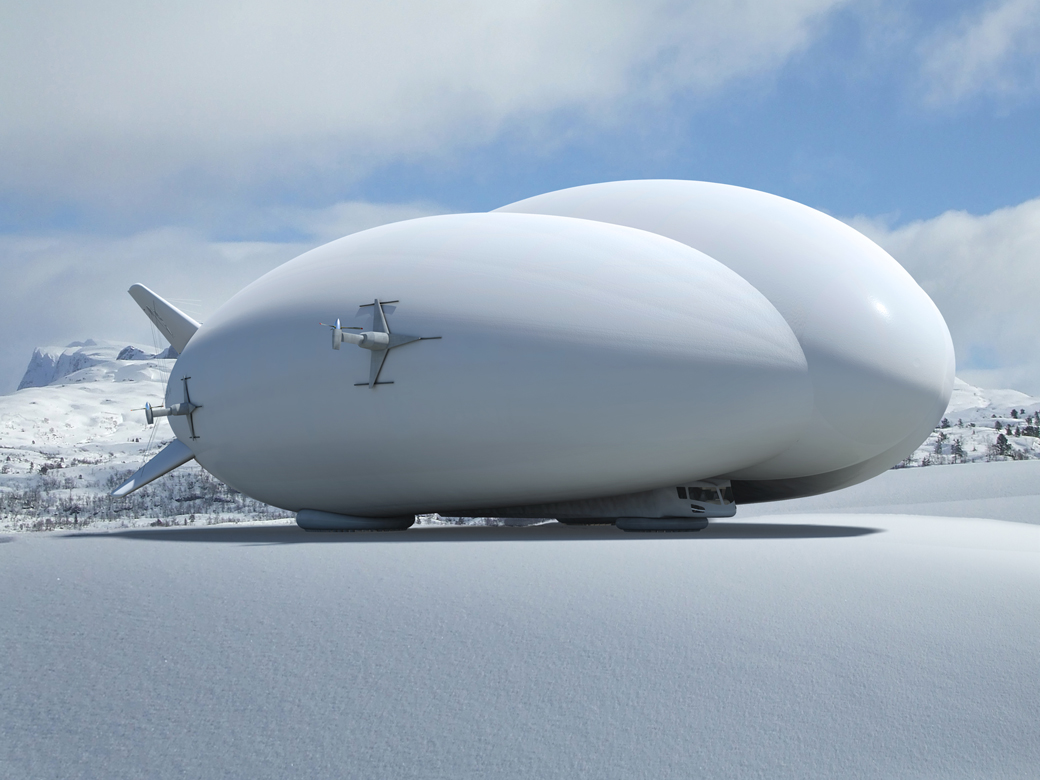
With easily-reachable deposits being depleted, mining and exploration is pushing further and further into frontier markets and remote locations. Building a mine where no infrastructure exists is a daunting challenge, and one that has crushed the hopes of many a mine developer. But what if a mine could be built and run without roads?
Such was the thinking among executives at Quest Rare Minerals Ltd., (TSX:QRM) the company developing the Strange Lake rare earths mine in Northern Québec, Canada.
Montreal-based Quest and Straightline Aviation recently announced an agreement to provide air services for the transport of ore concentrate, supplies and personnel using Lockheed Martin’s hybrid airships. The airships will shuttle between Quest’s Strange Lake open pit mine in Northern Québec and Schefferville, a town with a direct rail link to the Port of Sept-Iles.
Quest Rare Minerals' president Dirk Naumann told the CBC the company initially planned to build a road but the road cut across caribou migration habitat. That, and the daunting cost of road construction and maintenance – $350 million to build a 168-kilometre road versus $85 million annually to operate the airships – made airships a more economical option to bridge the 200 kilometres from the mine to Schefferville.
The mine has a preliminary economic assessment (PEA) and would produce separated rare earth oxides for a minelife of 30 years, according to a project page.
The agreement represents the first Canadian customer landed by Straightline Aviation, the world's largest airship company operating in 30 countries. Earlier this year UK-based Straightline signed a letter of intent with Hybrid Enterprises, the exclusive reseller of the hybrid airship, to purchase up to 12 aircraft with a potential value of roughly $480 million.
The LMH-1 is a unique new aircraft which is part helium dirigible, part cargo helicopter, part passenger airliner and part hovercraft.
By reversing the air-flow the landing gear acts as three giant suction cups and make it possible to land on and grip any field including ice, snow, mud, sand and water.
Earlier this year MINING.com toured Lockheed’s Skunk Works in Palmdale California where work on hybrid airship technology began more than two decades ago under a classified military program that, except for an early prototype, never got off the ground.
Straightline plans to operate a fleet of seven LMH-1 hybrid airships at the Strange Lake mine. The airships will transport personnel, mine supplies, and carry over 20 metric tonnes of rare earth ore concentrate annually for delivery to Quest’s Bécancour refining facilities.
Built by U.S. defense contractor Lockheed Martin, Quest says the LMH-1 is well suited to the company's transportation challenges at Strange Lake:
The airship has the ability to land on virtually any surface including snow, ice, gravel and even water, with no runways required or other expensive infrastructure. The helium-filled, heavier-than-air airships can carry 20 metric tons of cargo and up to 19 passengers.The LMH-1 is not only designed to use less fuel, emit less carbon dioxide and produce less noise than conventional aircraft, it also eliminates the need for costly ground-level infrastructure, avoiding impact on the area’s wildlife habitat compared to road transport and trucking along a road corridor to the Labrador Sea coast.
The company reveals the service agreement is valued at about $850 million which includes the cost of fuel. First commercial deliveries are scheduled for 2019. The contract will be for 10 years with an option to extend 20 years in line with the projected 30-year life of the mine.
Fonte: http://www.mining.com/

Nenhum comentário:
Postar um comentário